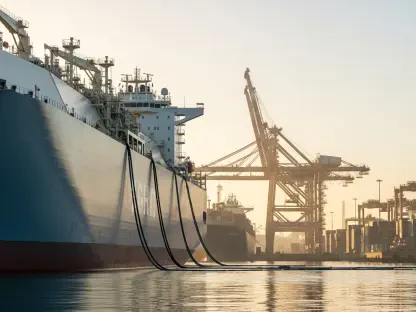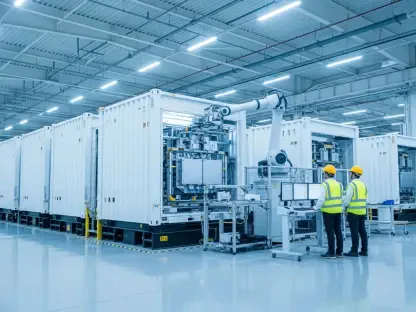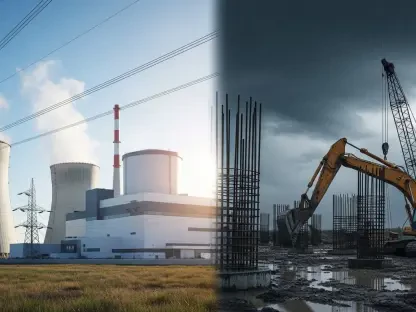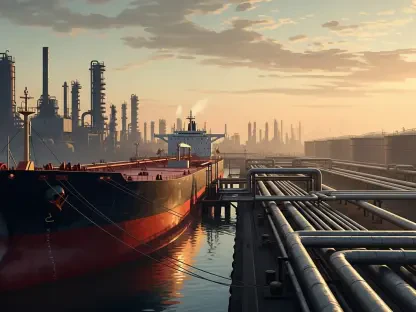The European Energy Transition: Ambition and Reality
Europe stands at a critical juncture in its quest to redefine global energy standards, with renewable sources like wind and solar now accounting for over one-third of the electricity mix, surpassing coal as a primary power source. This remarkable shift underscores the European Union’s commitment to slashing carbon emissions and embracing a sustainable future. The ambitious policies driving this transition have positioned the EU as a beacon of climate action, often setting the tone for international environmental discussions.
However, this domestic progress contrasts sharply with the global energy landscape, where fossil fuels still reign supreme, comprising 87% of world energy consumption as of recent data. While Europe pushes toward a greener horizon, much of the world remains tethered to coal, oil, and natural gas, revealing a significant disconnect between regional aspirations and planetary realities. This disparity raises questions about the broader impact of Europe’s efforts in a fossil fuel-dominated global market.
Global Energy Trends vs. EU Policies
Disparities in Energy Demand and Consumption
A striking divergence exists between the EU’s energy trajectory and global patterns, as the Union’s energy demand has shrunk by nearly 6 exajoules over recent years, while worldwide demand has surged by 77 exajoules. The Asia-Pacific region drives much of this growth, contributing 65% of the increase, with a heavy reliance on traditional energy sources. This global uptick highlights how Europe’s decline in consumption stands in stark contrast to expanding needs elsewhere.
Coal, in particular, remains a cornerstone of energy supply in key economies, with nations like China, India, and Indonesia producing 71% of the world’s total. This persistent dominance of fossil fuels outside Europe underscores a fundamental mismatch between the EU’s renewable-focused policies and the energy priorities of other regions. The gap suggests that Europe’s model may not resonate with countries prioritizing rapid economic development over environmental targets.
Impact and Effectiveness of Renewable Investments
Despite the EU pouring over $5 trillion into renewable energy initiatives across recent decades, the global share of renewables lingers at a mere 5.6% of total energy consumption. This limited impact reflects the challenge of scaling clean energy solutions in a world where demand continues to escalate. The investment, while substantial, struggles to shift the needle on a planetary scale, raising doubts about its overall effectiveness.
Looking ahead, the pace of renewable growth appears insufficient to match the rising global energy appetite, with fossil fuel consumption expanding seven times faster over the past decade. This trend casts a shadow over the ability of green technologies to displace traditional sources anytime soon. The disparity prompts a critical evaluation of whether Europe’s heavy financial commitment can yield meaningful global outcomes in the near term.
Economic Consequences of the Green Push
The EU’s stringent climate policies, while environmentally forward-thinking, have sparked significant economic repercussions, including a noticeable industrial decline. Sectors reliant on affordable energy face mounting challenges, with job losses becoming a pressing concern for many communities. This economic strain is compounded by stagnating per capita GDP, which lags far behind that of the United States, nearly doubling in nominal terms since 2008.
Critics have labeled this trajectory as a form of “industrial masochism,” arguing that the self-imposed economic harm undermines Europe’s competitiveness. The financial burden of green initiatives has also fueled public discontent, as households and businesses grapple with rising costs tied to the transition. This growing frustration highlights a tension between environmental ideals and the practical realities of sustaining economic vitality.
The broader implications of this economic fallout are evident in the diminishing industrial base, which struggles to adapt to high energy costs and regulatory pressures. As other regions capitalize on cheaper, conventional energy sources, Europe’s industries risk losing ground in the global market. This dynamic poses a fundamental challenge to maintaining a balance between ecological goals and economic stability.
Regulatory Framework and Climate Ambitions
The EU has set an ambitious target of achieving a 90% emissions reduction by 2040, underpinned by a robust regulatory framework designed to accelerate the shift to renewable energy. Policies ranging from carbon pricing to renewable subsidies aim to transform the energy sector, enforcing strict compliance across member states. These measures reflect a deep commitment to redefining Europe’s environmental footprint on a global stage.
Yet, a notable disconnect persists between these lofty goals and the realities of global energy dynamics, where fossil fuels continue to dominate. The feasibility of meeting such aggressive targets remains under scrutiny, especially as industrial sectors voice concerns over the impact on their competitiveness. The regulatory push, while visionary, risks alienating key economic players unable to keep pace with the rapid changes.
This misalignment with global trends could further strain Europe’s ability to lead by example, as compliance becomes increasingly challenging for industries already burdened by costs. The potential erosion of industrial strength raises questions about whether such ambitious climate policies can coexist with the need to maintain a robust economic foundation. A reassessment of these targets may be necessary to align them with practical outcomes.
Future Outlook: Leadership or Isolation?
As the EU forges ahead with its green energy agenda, the gap between its climate ambitions and global consumption patterns continues to widen, potentially isolating it from broader international trends. While Europe aims to set a precedent, the reliance on fossil fuels elsewhere suggests that its influence on global energy practices may remain limited. This divergence could redefine the Union’s role in shaping worldwide environmental strategies.
The risk of retreating from international commitments, such as the Paris Agreement, looms large if targets prove unattainable or economically crippling. Such a move would signal a retreat from global leadership, diminishing Europe’s voice in critical climate discussions. The possibility of reduced relevance, characterized by “zero industry, zero prosperity, and zero global impact,” presents a sobering scenario for policymakers to consider.
Navigating this future will require a delicate balance, as the EU must weigh the benefits of pioneering green policies against the costs of potential isolation. The trajectory ahead hinges on whether Europe can inspire others to follow its path or if it will find itself sidelined by differing global priorities. This uncertainty underscores the need for strategic adaptability in pursuing both environmental and economic objectives.
Conclusion: Balancing Ideals with Economic Realities
Reflecting on the insights gathered, it becomes evident that the EU’s strides in renewable energy adoption mark significant domestic progress, yet fall short of influencing global energy trends dominated by fossil fuels. The substantial economic costs, including industrial decline and public dissatisfaction, paint a complex picture of the challenges faced. These findings highlight a critical tension between environmental aspirations and the need for economic resilience.
Moving forward, a balanced strategy emerges as a vital consideration, one that integrates climate goals with economic stability and global relevance. Policymakers are urged to explore flexible approaches, perhaps revisiting regulatory timelines or incentivizing innovation to lessen industrial burdens. Such steps could bridge the gap between idealism and practicality, ensuring Europe’s green push does not come at the expense of its industrial foundation.
Ultimately, the path ahead demands a recalibration of priorities, focusing on collaborative international efforts to amplify impact while safeguarding economic health. By fostering dialogue with global partners and adapting to diverse energy needs, Europe could position itself as a true leader, inspiring change without sacrificing prosperity. This nuanced approach offers a hopeful framework for aligning environmental stewardship with sustainable growth.









